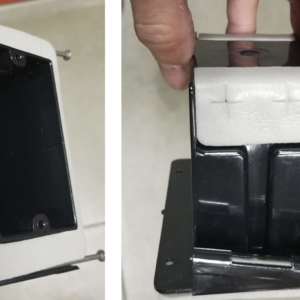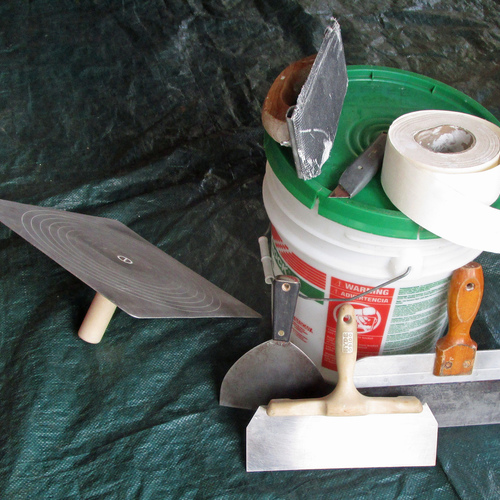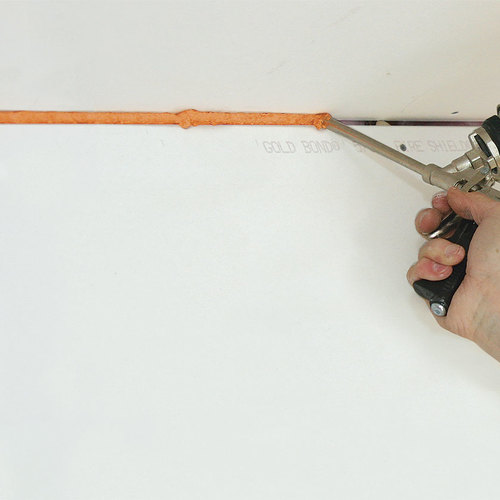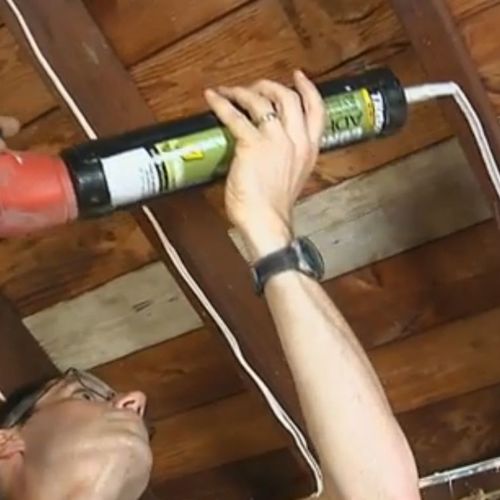You have stumbled across some videos that are being reviewed by the author and editors. These videos will be available to GBA PROs soon. In the meantime, please keep this as ‘our little secret’ Thanks. Episode 1: Introduction: Voiceover: Stopping air leaks is the single most important part of making a house more energy efficient. You can stop air on the outside with plywood, house-wrap, and tape, but the best air barrier is more of a system that incorporates all the components of a wall or roof assembly.
We decided to drywall the garage shop in Fine Homebuilding’s project house using the airtight drywall approach. Partly to show our readers how to do it and partly so that we could make Myron Ferguson do our dirty work for us. The outside of the house will eventually be covered with house wrap and foam sheathing, so the drywall is not the primary air barrier; it is part of a larger system. The other main materials Myron uses in this project are pretty common on most job sites – construction adhesive, latex caulk, and canned foam. Some other materials are a little less common on jobsites, mainly foam boxes for sealing electrical outlets.
This garage has a 2×6 bottom plate, but 2×4 studs. Before Myron came out, we placed blocks in each stud cavity because without blocks to glue the bottom of the drywall sheets to, a considerable amount of air could flow through the wall assembly. If not already done at the pre-construction walk-through, seal all of the gaps between framing members. Around windows, around doors, at the gaps between king stud and trimmer, between header and top plate, and between the double – or triple, in the case of this shop, triple top plates.
Episode 2: hanging exterior walls: Voiceover: When placing the sheets, be careful not to smear the caulk or adhesive too much. The framing is only an inch and a half wide, so smearing it can seriously compromise the integrity of the air barrier. Floating the butt seams allows faster drywall hanging and cleaner seams because you can use a recessed seam backer to pull the butt ends back where mud would otherwise build up. Now with the sloped part of the ceiling done, we move to the flat part. For this, the author uses a drywall lift, which allows him to carefully place these 12 foot sheets of 5/8 in. drywall without smearing the caulk. Holes in the ceiling for junction boxes or light fixtures are cut out with a router and then sealed with caulk. It is better to seal holes with caulk after the drywall is attached as opposed to before hanging the sheet, because the drywall router or saw might damage the caulk joint. Latex caulk is a better choice for this application because drywall compound won’t stick to silicone caulk. Cutting the sheets a quarter inch short is a good way to ensure that the sheets will fit. In this instance, they also cut a notch for the large piece of conduit running down the wall. Again, all of the gaps will be sealed with canned foam later. Again, it is important to get the sheet squared up before pushing it up tightly against the framing, and consequently, the adhesive. But it tight to the studs, square to the adjacent sheet and lift it into place. One of the tricky things about old framing is that sometimes it is not square, which means a gap somewhere in the drywall seam. For big gaps like this, cut a custom patch, pack it in and cover it with mud later on.
Episode 3: Hanging the ceilings: Voiceover: Hanging drywall on an exterior wall uses the same fundamentals as hanging the ceiling but, there are more holes – electrical outlets, windows, doors, and service chases. Before hanging the walls, cut back all of the canned foam applied to the ceiling perimeter, any obstructions around windows, and if not done on the pre-construction walk-through, seal all of the gaps between framing members. Again, the face of the studs get a thick bead of adhesive. Windows get the royal treatment. Use both latex caulk and polyurethane construction adhesive. Place the left edge of the sheet into the corner and then lay the rest of it flat against the framing, caulk, and adhesive. After the cutouts are made for the boxes, seal the drywall opening to the edge of the box opening. First, brush out the dust so that the caulk can stick. Then apply a generous bead of caulk around the perimeter of the box. Smear it in with your finger to make sure the opening is sealed. It is not just windows and electrical boxes that can make a wall tricky. This big conduit running from the electrical service panel outside to the breaker panel inside presents a bit if an obstacle. To best treat this, we removed the fastening brackets so that we can slide a sheet of drywall behind it. After the drywall is sealed up, the conduit can be boxed out. Don’t box out the chase before the drywall because this introduces long cracks in an otherwise continuous plane.
Weekly Newsletter
Get building science and energy efficiency advice, plus special offers, in your inbox.











0 Comments
Log in or create an account to post a comment.
Sign up Log in